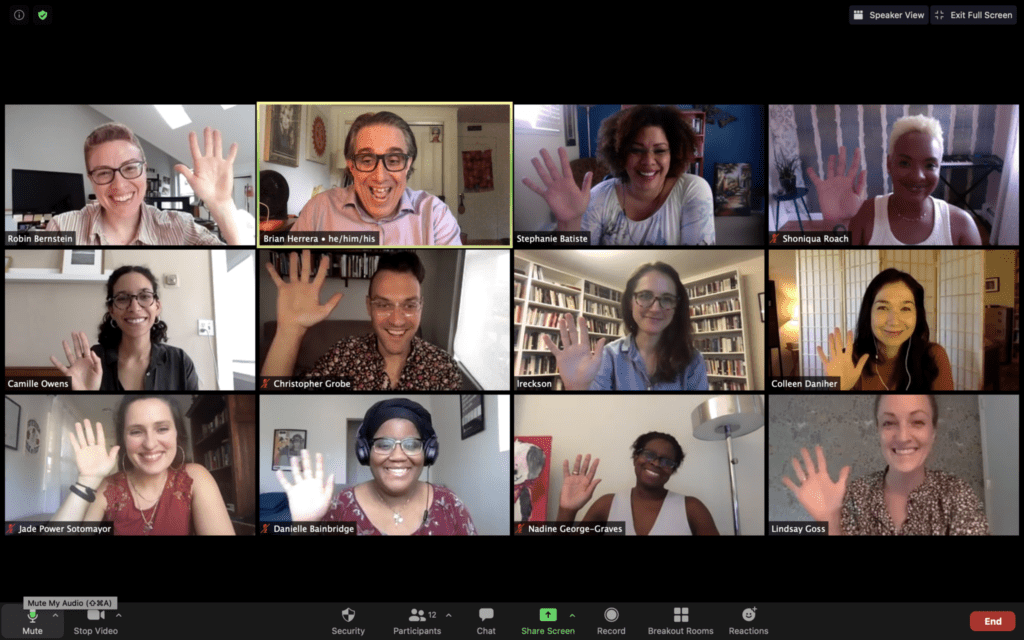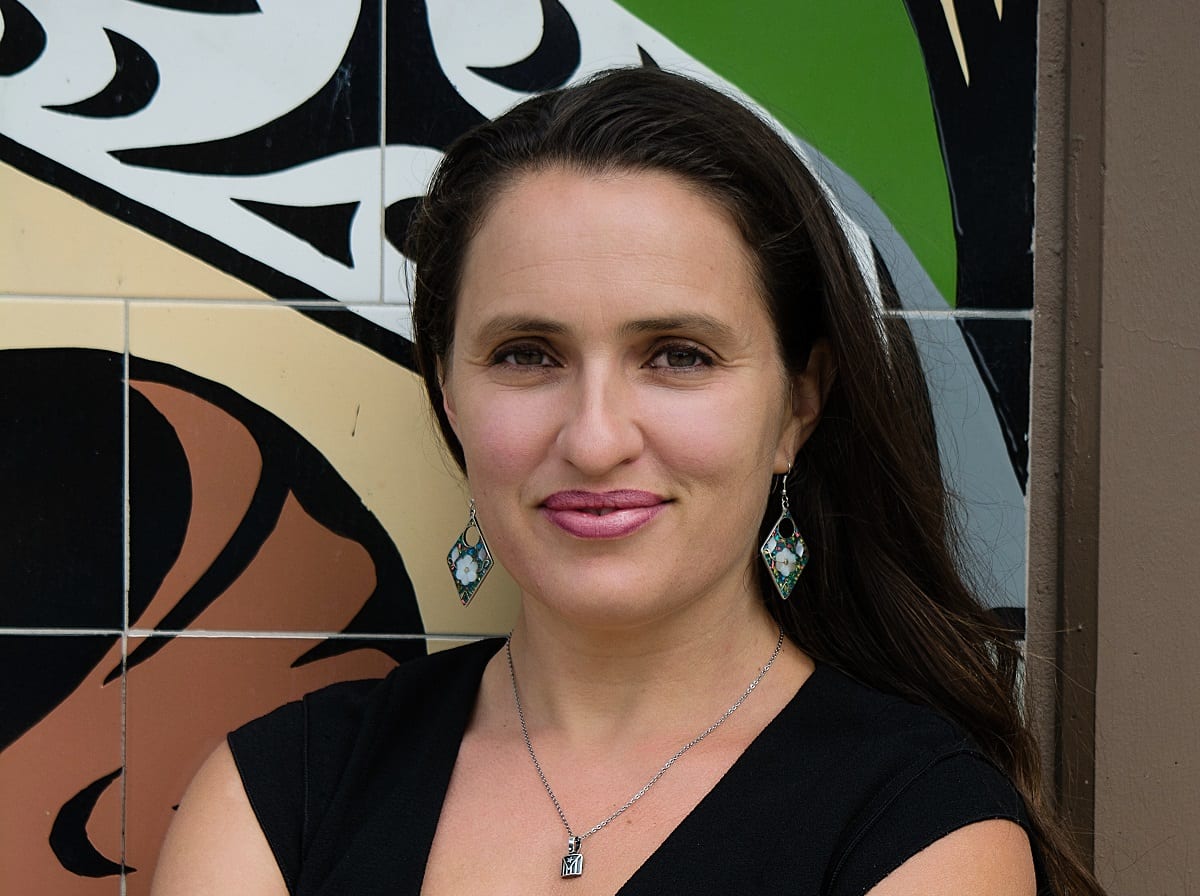By Jon Garaffa ’20
In August, Brian Herrera (Lewis Center for the Arts) led a Rapid Response Magic Project of the Princeton University Humanities Council called “Performance and American Cultures: Summer Manuscript Intensive.” It gathered six first-time book authors for intensive conversation about their forthcoming monographs, each poised to potentially help transform both American Studies and Performance Studies. Over the course of this one-day virtual convening, each of these authors pre-circulated either a manuscript chapter or a book proposal. The pieces were then read and commented upon by six scholars who had themselves published distinguished first books at the intersection of American Studies and Performance Studies. Later in the afternoon, Eric Zinner, editor-in-chief of New York University Press, offered the junior scholars an introduction to book publishing and answered their questions about the manuscript submission process. A concluding conversation drew on the earlier discussions to delve into method, theory, and narrative.
Bringing together scholars from twelve different universities—including Princeton University; Harvard University; Yale University; Temple University; Amherst College; Northwestern University; the Ohio State University; San Francisco State University; the University of California, San Diego; and the University of California, Santa Barbara—the event supported junior scholars with exceptionally promising books in progress, while also building intergenerational community among scholars committed to the futures of American Studies, of Performance Studies, and of the intersections conjoining these two distinctive “interdisciplines.”

One of the junior scholars, Jade Power-Sotomayor, is an Assistant Professor of Performance Studies at the University of California, San Diego. Her research focuses on Latinx theater and performance, and engages with the intersections of race, gender, and language that emerge from these art forms. At the colloquium, she presented her book project ¡Habla!: Speaking Bodies in Latinx Dance and Performance. Power-Sotomayor provided her perspective on how dance takes on a profound role in shared pan-Latinx experience and identity, or Latinidad.
How did you come to realize that you wanted to teach and research in areas of Latinx theater and performance?
I moved from Puerto Rico to California when I was seven years old. This was quite a disorienting experience, but after some time I found my footing through theater and dance productions. These performances helped me to understand my own identity both as a Latina and as a Puerto Rican living on the West Coast amongst many Chicanas, and gave me a way to make sense of the various worlds that I walked through. As an undergraduate I decided to write my senior thesis about living between these two worlds.
Years later, I decided to pursue a master’s degree in Latin American Studies because I wanted to dive more deeply into ethnographic research, approaching these performance practices in a way that I hadn’t been able to previously. I was able to use my personal experience and curiosity to inform this research. My master’s advisor Dr. Jorge Huerta encouraged me to apply to a PhD program in theater, and eventually won me over to become his mentee.
As I entered into this program I ended up asking some of the same questions that I had been asking throughout my life: How can we produce a sense of belonging and relation through the embodied practices of these dances—not just movement for movement’s sake, but also pertaining to the production of sounds through this movement? This question is particularly important in the bomba style of dance. I want to investigate the space between the two disciplinary formations of acting and dancing to show that they are not necessarily siloed, as is commonly perceived.
What message do you hope to spread through your project ¡Habla!: Speaking Bodies in Latinx Dance and Performance?
The title of the book, ¡Habla!, actually comes from a Spanish exclamation that means to “speak on it,” to “say what you gotta say.” In bomba, a dancer conducts an improvised dance interpreted by a rhythmically precise lead drummer. When the dancer produces sound in combination with an affective power and a physical grace, one could call out “habla!”—a laudatory exclamation acknowledging what is being expressed. Bomba is a case study for examining dance not solely as a choreographic practice but also as a linguistic and relational practice.
Bomba is exemplary of what it means to attend to embodied communication in a way that is beyond the visual, in a way that incorporates the sonic. It also opens up another host of questions having to do with race, gender, colonialism, and class. The next part of the book project has to do with “code-switching.” Bomba, as the oldest extant dance form in Puerto Rico, opens a whole conversation about what it means to create a living practice, to which gendered and racialized bodies attach themselves. What kind and level of “code-switching”—strategically moving in and out of these embodied codes—is involved? This topic can inform our understanding of Latinidad and Latinx identity more broadly speaking—a larger category into which many different bodies, experiences, and histories are placed.
What I’m interested in is: What is it that dance does for Latinx communities? How do Latinx people use their bodies to speak to each other? And how are these dance scenarios a way for Latinx people to talk back to these legacies of colonialism, enslavement, and a dominant U.S. culture? These are very powerful aspects of how Latinidad is imagined, and I am trying to dig more deeply into the nuances and dynamics of it all.
How do you think collaboration at last month’s “Performance and American Cultures” conference might influence your project?
The conference was extremely well-organized and very thoughtfully put together in a way that maximized both a sense of generosity but also rigor. I think the participants felt a significant amount of autonomy but were given a helpful sense of guidance as well. The generous and supportive spirit put forth by the conveners set a larger tone for the exchange. The norm in academia is often that of criticism and deconstruction, and it is a very vulnerable process to share one’s uncompleted work, or to share one’s work period. But to have these people look at my work and give great feedback was encouraging and may have helped to expose some issues to fix at later points. It was invigorating to be in community this way, but it was also very practically helpful.
What is one thing you learned at the conference that you think everyone should know?
Looking at everyone’s projects made me tremendously inspired by the multi-directional, complex, and necessary connections between Performance Studies and American Studies. It became very clear to me just what a strong series this is, and what an important framework this collaboration provides for these projects. One thing I would want people to know is that talented and high-achieving people also have their own vulnerabilities, which can create avenues towards creativity and a deep connection.
Is there anything else you’d like to add?
I feel very grateful that the project’s vision sought to feature the work of junior women scholars of color. That is really doing the important work of pushing these projects through to completion.
















